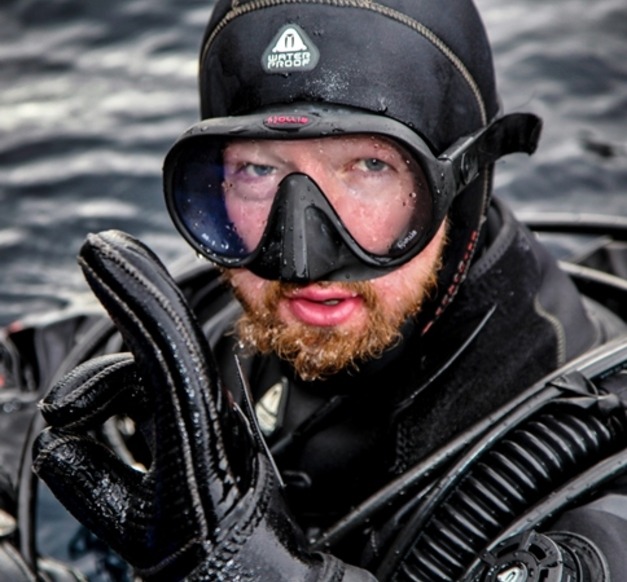“The purpose of this project is to enhance the position of marine archaeology in Iceland, as the bottom of the ocean around Iceland has not been studied much with the intent of finding and studying your cultural and historical natural resource,” says the Irishman Kevin Martin, a doctoral student in Archaeology at the University of Iceland. He is currently working on developing and testing a predictive modelling survey methodology to locate submerged remains off in the Faxaflói region. This applies for the most part to shipwrecks.
“I have always been interested in combining my two passions: archaeology and diving. Marine Archaeology seems to be the perfect union,” says Martin, who is a professional diver.
“I think that Icelandic people are very interested and proud of their seafaring traditions and history; just like the Irish. This project will hopefully add new information to this part of Iceland's cultural heritage that has hitherto been a fairly closed book. I am confident that this research will offer Icelanders another way to connect with their past and understand the lives of their ancestors better.”
“Certainly the weather and sea conditions here in Iceland are more challenging but that’s also part of the testing aspect of the project. To see if this type of work can be done even in the most extreme conditions,” says Martin.
Martin and his colleagues have not discovered any “amazing shipwrecks“ yet, as he puts it, but he is currently working on financing the project as well as gathering data to use at a later date to map and narrow down the area for the survey work. “The potential is, nonetheless, very high for discovering something amazing here in Icelandic waters even though its continuation is dependent on receiving research grants,” concludes Martin and smiles, optimistic for the future of the project.
Supervisor: Gavin Murray Lucas, Professor at the Faculty of History and Philosophy.
Cultural heritage
This project will hopefully add new information to this part of Iceland's cultural heritage that has hitherto been a fairly closed book.



